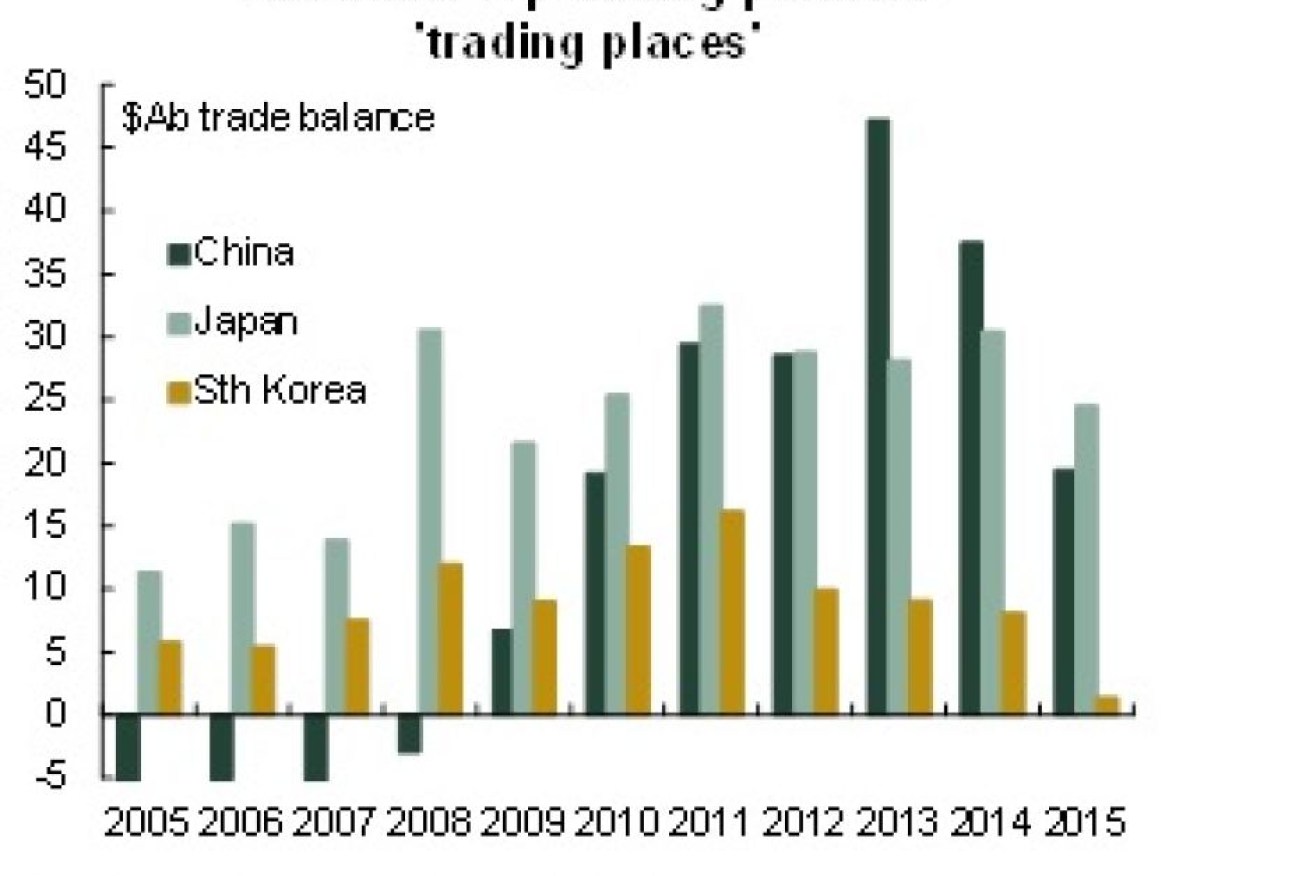‘Disaster’ trade deficit Australia’s worst on record

Haver/TD Securities/ABS
Australia has posted its worst monthly trade deficit on record, with imports exceeding exports by nearly $3.9 billion.
Bureau of Statistics data show the deficit of $3,888 million in April just edged the previous record of $3,881 million set in February 2008 as commodity prices slumped during the peak of the global financial crisis.
The data shocked economists, who had been expecting a poor result but nowhere near as bad as the actual figure.
• GDP growth a nice surprise
• I wasn’t panicking about the economy … until now
• Green shoots, but in all the wrong places
The typical forecast in a Reuters survey was for a deficit of $2.25 billion, which would have already been almost twice the previous month’s trade shortfall.
The actual result is more than treble March’s downwardly revised $1,231 million seasonally adjusted deficit.
The value of goods and services exports fell six per cent, or more than $1.56 billion, seasonally adjusted, while the value of imports jumped four per cent, or nearly $1.1 billion.
Traders reacted to the negative trade surprise, and disappointingly flat retail sales, by selling the Australian dollar, which dropped from around 77.8 before the release at 11:30am (AEST) to 77.1 shortly after that time.
JP Morgan economist Tom Kennedy described the trade data as a “disaster”, with it being the biggest deficit in figures going back to 1971.
UBS chief economist Scott Haslem pointed out that some deficits during the global financial crisis were worse as a proportion of the economy, which has grown since then, but it was still a very poor set of numbers.
“Today’s trade data thumped home the reality of Australia’s falling terms of trade,” he said, referring to the ratio of prices that Australia gets for its exports compared to what it pays for imports, which fell another 2.9 per cent in the March quarter.
Coal and iron ore dominate export slump
The biggest drag on exports came from coal and iron ore.
The ABS category that covers coal slumped by 22 per cent, or $859 million, while the metal ores and minerals category dominated by iron ore dropped by 13 per cent, or $808 million.
For iron ore, the fall was due to a small decline in the quantity shipped and a large slide in the price received for those exports.
For coal, the slump was much more due to a steep slide in the volume of exports, while prices fell slightly.
JP Morgan’s Tom Kennedy said the ABS has noted that weather-related port closures negatively affected coal exports in April.
“Given this drag is weather-related, we expect a bounce-back, with export volumes likely to bounce strongly in the upcoming May release,” he added.
Mr Kennedy said the fall in iron ore export revenue is more fundamental, but it also should improve a little in the May figures.
“Volumes are expected to pick-up strongly from here, given ports data and the output schedules of the miners,” he observed.
“Similarly, iron ore prices have bounced 30 per cent from the April’s lows in spot markets, meaning prices dynamics will become more favourable for iron ore exporters in coming months.”
Although UBS are expecting those prices to fall back to around $US50 a tonne later in the year.

Japan is the source of Australia’s biggest trade surpluses so far in 2015. Photo: Haver/TD Securities/ABS
While some bounce back is expected, NAB’s senior economist David de Garis told ABC News that the data are a reflection of China’s economic slowdown and transition.
“It’s showing that the slowdown in the Chinese economy is affecting the amount of cash coming into the Australian economy,” he said.
“Means a little bit slower economic growth and slower income growth too.”
However, TD Securities chief Asia-Pacific economist Annette Beacher said there is too much focus on China, with Australia actually earning a bigger surplus from its trade with Japan over the first four months of this year.
“China is Australia’s number one trading partner … in terms of exports, for example 2015 to date 30 odd per cent of our exports do go to China,” she told ABC News Online.
“But what I like to look at is which country is actually giving us more dollars in net terms, as in exports minus imports … for the first four months of 2015 Japan is actually our number one trading partner.
“Some of that is actually because imports from Japan for Australia is actually only seven per cent of imports, so it’s more about that we import less from Japan.”
-ABC








